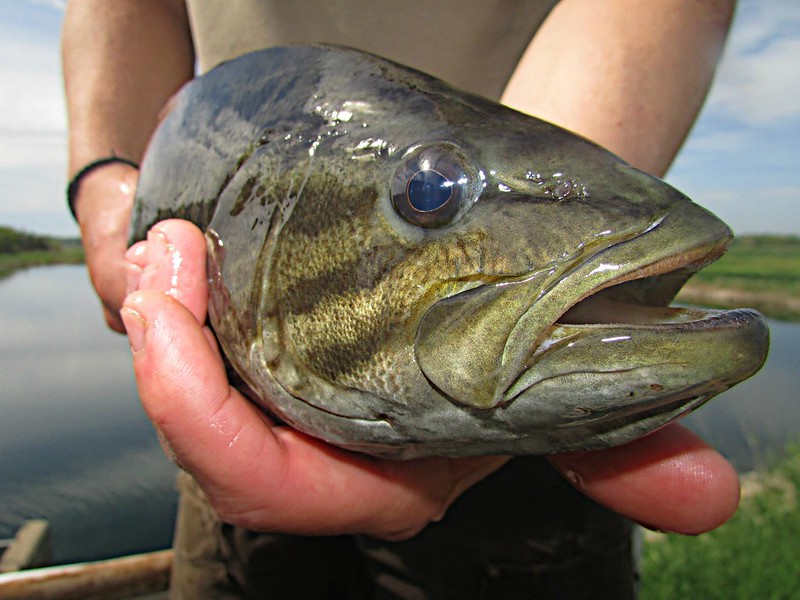Spears, Bait Again OKed On Coquille For ‘Illegally Introduced’ Bass; Effort To Help Fall Kings, Lamprey
THE FOLLOWING IS A PRESS RELEASE FROM THE OREGON DEPARTMENT OF FISH AND WILDLIFE
The use of spears, spear guns and angling with bait to harvest smallmouth bass is allowed in the Coquille River system beginning Saturday, May 22 through October 31, 2021. The temporary rule is meant to reduce impacts of illegally introduced non-native smallmouth bass on wild fall Chinook salmon. Under existing regulations, there is no limit on the size or number of bass that can be taken in the Coquille.

While poor ocean conditions in recent years resulted in low fall Chinook returns coastwide, the Coquille has been particularly hard hit and has not rebounded to the same extent as other systems. ODFW scientists concluded the most likely cause is predation by non-native smallmouth bass which have expanded their range significantly since the initial illegal introduction. In addition to their impact on fall Chinook, there are also concerns for Pacific lamprey which are preyed upon by smallmouth bass. Fishery managers enacted the same temporary rule on spearfishing in 2020 (mid-July through October), and began limiting wild fall Chinook harvest in 2019.
“Our main objective is to limit the number of smallmouth bass in the Coquille River system where they are negatively impacting juvenile fall Chinook salmon,” said ODFW biologist Gary Vonderohe. “Spearfishing provides another tool to remove smallmouth bass and help our native fish. Many spear fishing anglers participated in this unique harvest opportunity last year.”
Fall chinook salmon and Pacific lamprey are culturally important to many Pacific Northwest Tribes. Locally, the Coquille Indian Tribe is concerned about the impacts smallmouth bass have on both species.
“The Coquille Tribe has been in the Coquille watershed since time immemorial, and we want to see a healthy river system,” said Helena Linnell, Biological Planning and Operations Manager for the Coquille Indian Tribe. “Restoring healthy populations of fall Chinook and lamprey is important to us. If spearfishing can reduce the non-native species, that’s good for the tribe and good for the local community.”
The temporary rule applies in the mainstem Coquille River and the East, Middle, North, and South forks of the Coquille River. In the South Fork Coquille, the regulation applies from the mouth to the U.S. Forest Service boundary near Powers.
Access maps to the South Fork Coquille and lower Coquille can be found here and for a map of smallmouth distribution, click here. ODFW has a helpful series of videos on spearfishing the Coquille River, including how to build your own fishing spear and how to filet a smallmouth bass.
ODFW conducted electrofishing for smallmouth bass in 2020 and is developing plans to add other removal methods to reduce predation on juvenile wild fall Chinook. A smallmouth bass population assessment will be conducted later this summer which will help inform future control actions.
Multiple age classes of smallmouth bass were first confirmed in the Coquille in 2011 meaning the fish had been in the river for multiple spawning cycles. Vonderohe said their distribution has grown yearly in the Coquille Basin, expanding to most of the reaches with habitat and temperatures conducive to smallmouth bass reproduction.
“The warm temperatures and low flows we’re seeing so far this year really favor smallmouth bass and allow them to make further inroads into salmon habitat,” Vonderohe said.
